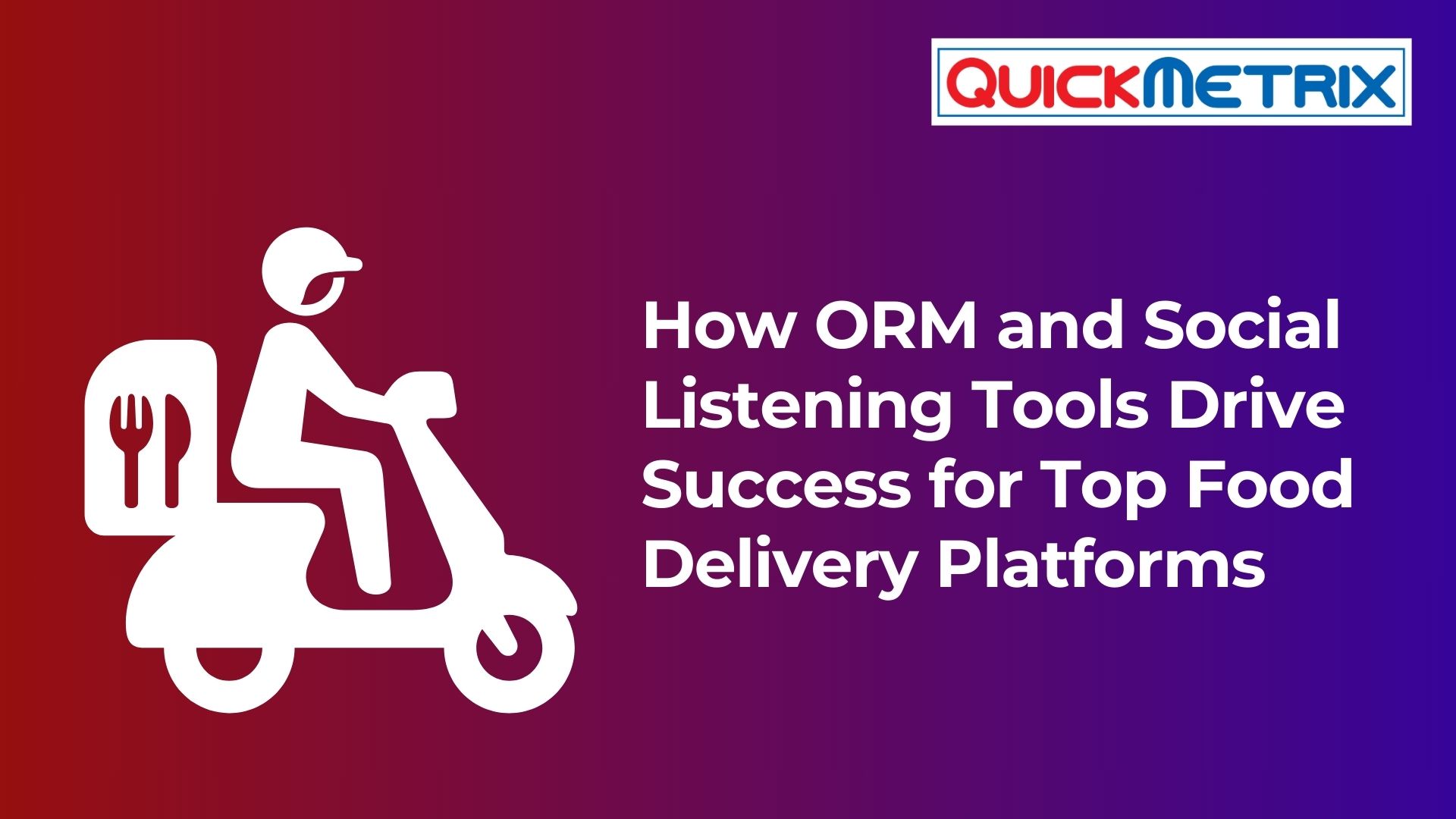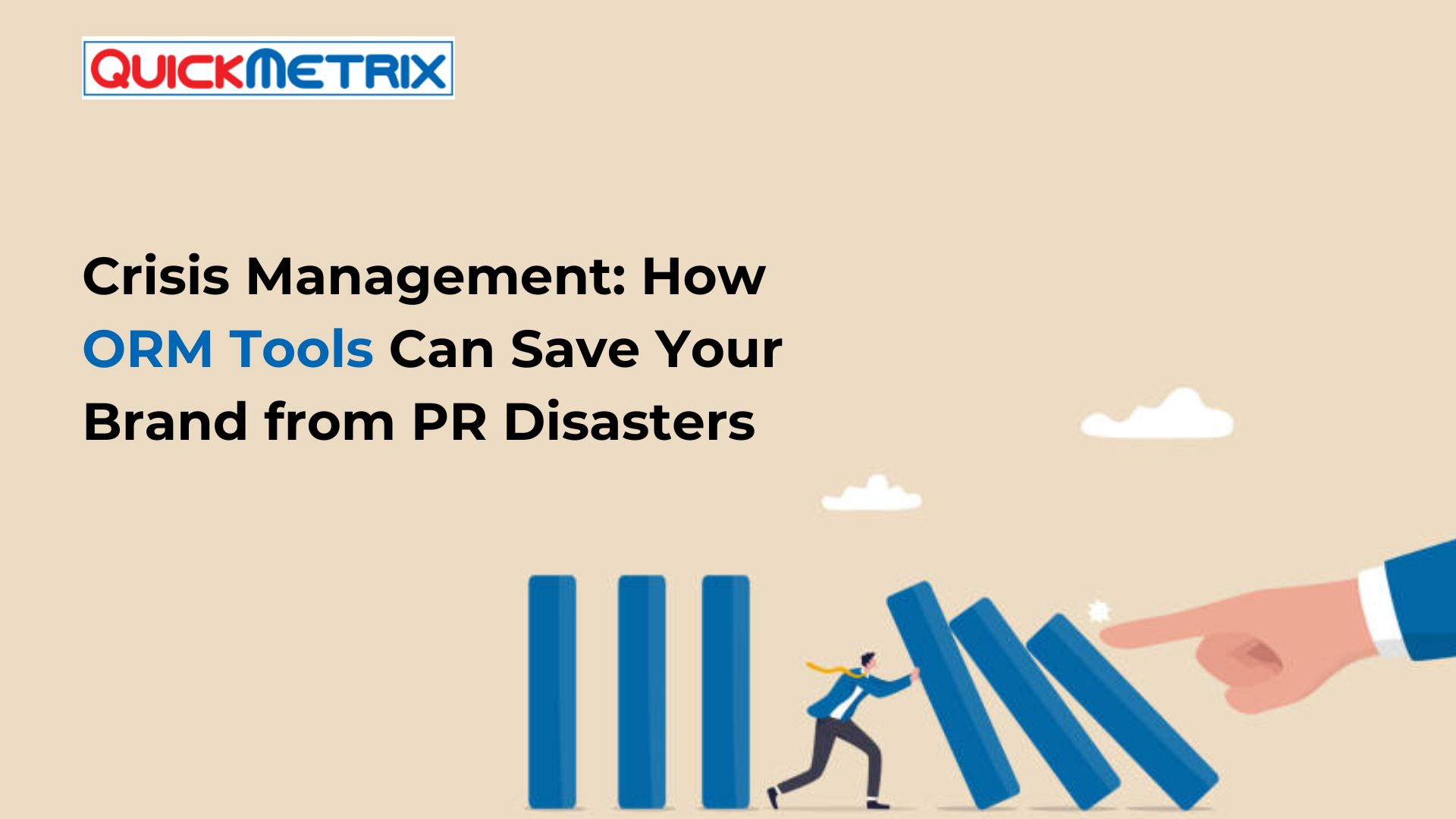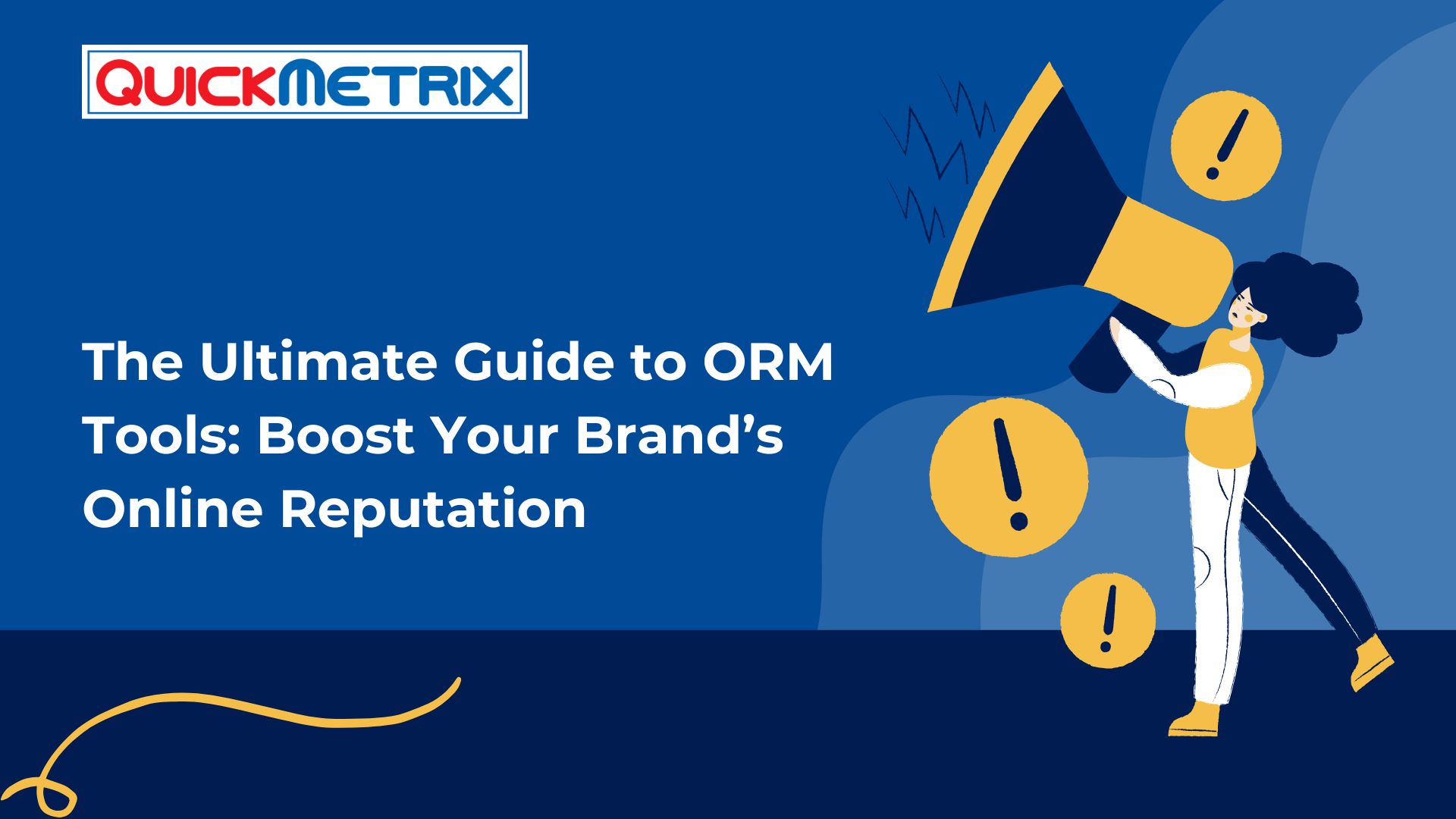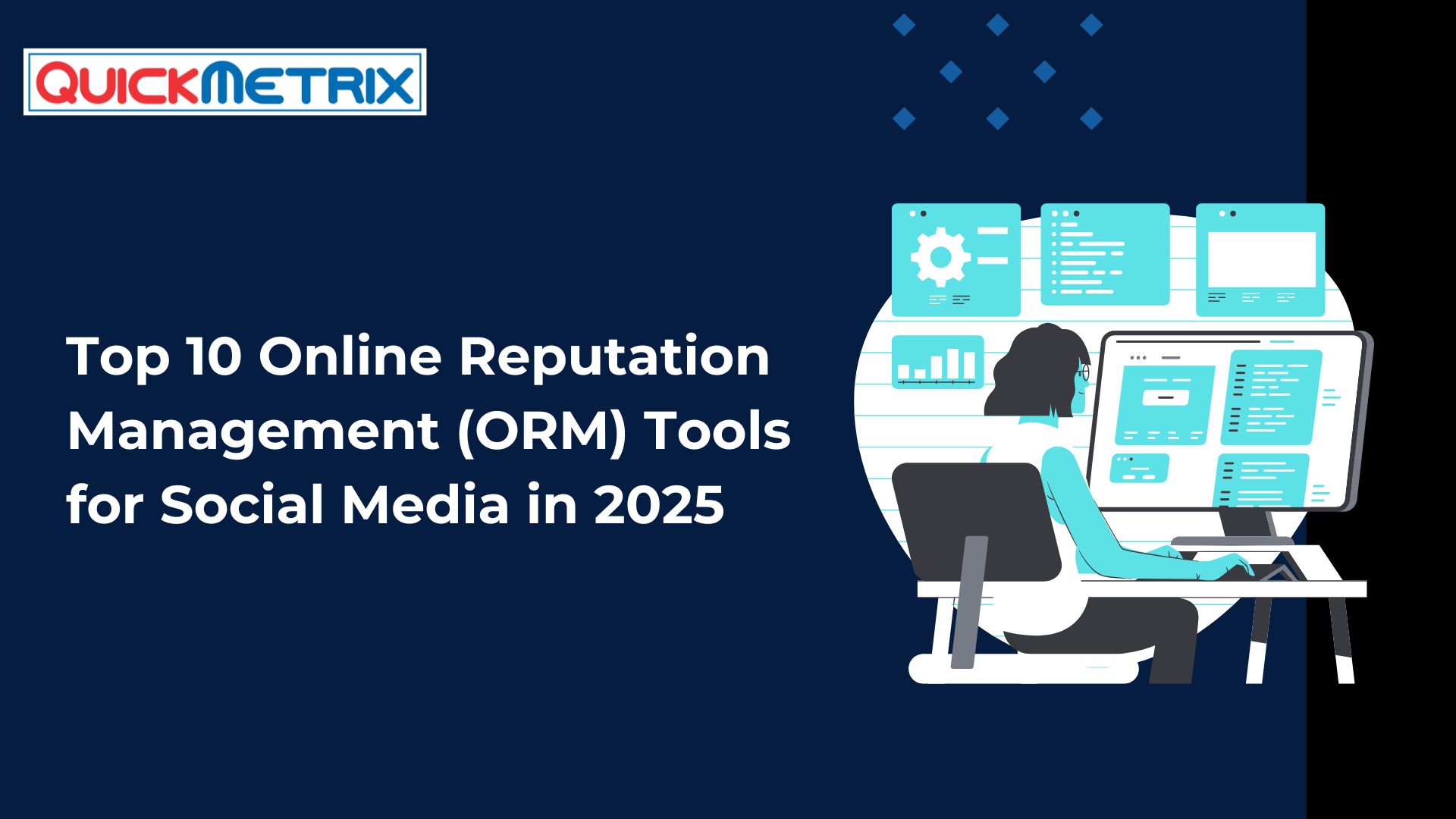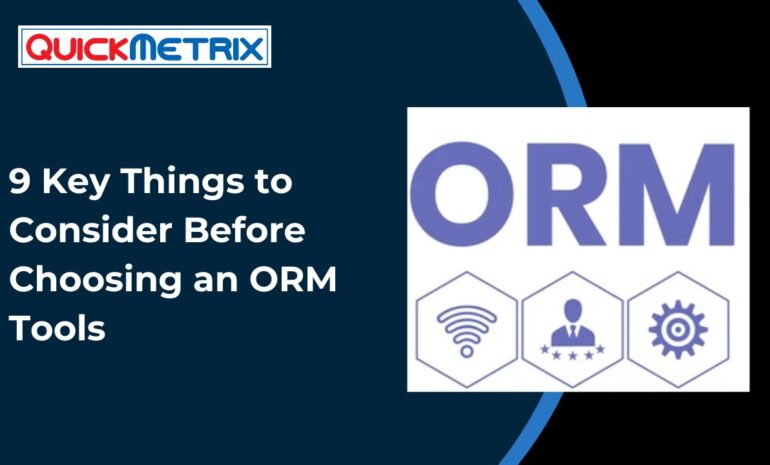A. Overview of Food Delivery Industry
The food delivery industry has rapidly grown over the past decade, with millions of people relying on convenient apps to bring their favorite meals right to their doorstep. From quick lunches to late-night snacks, platforms like Uber Eats, DoorDash, and Grubhub have transformed how people experience dining. As competition increases and consumer expectations rise, these platforms must prioritize their brand reputation and customer satisfaction.
B. The Role of ORM and Social Listening
Online Response Management (ORM) and social listening are vital tools for navigating this bustling industry. ORM helps businesses manage their image across various online platforms, while social listening enables them to understand customer sentiments and trends. Together, they create a powerful combination that can greatly influence a brand’s success.
Here, we will explore how ORM and social listening tools not only help food delivery services enhance their customer experience but also drive overall success. Through real-world examples and actionable insights, we’ll uncover the essential practices that can lead to stronger brand loyalty and better customer retention.
II. Understanding ORM (Online Response Management)
A. Definition and Importance of ORM
What is ORM?
Online Reputation Management refers to the practice of monitoring. Online response management software is designed to streamline and enhance your customer engagement process, ensuring timely, personalized, and effective communication across all digital platforms.
Why ORM matters for food delivery platforms
In an industry where customers can easily switch to a competitor with just a few taps on their screens, a robust ORM strategy is crucial.
Key components of ORM
Monitoring reviews and ratings
Engaging with customers on social media
Addressing negative comments and misinformation
Building a strong online community
B. Techniques Used in ORM
Monitoring online reviews and ratings
Regularly checking reviews on platforms like Google my business, zomato and social media can help food delivery services stay in tune with customer sentiment.
Responding to customer feedback
Being responsive to both positive and negative reviews showcases a brand’s commitment to its customers. Thanking users for compliments and addressing concerns openly can turn a dissatisfied customer into a loyal advocate.
Managing brand image on social media
Active online engagement helps shape public perception. Food delivery platforms that post regularly and interact with followers tend to cultivate a loyal fan base.
C. Case Studies: Successful ORM Practices
Several food delivery platforms have demonstrated the power of effective ORM:
DoorDash: After facing criticism over delivery delays, DoorDash revamped its customer service approach, ensuring timely responses to complaints. The outcome was a noticeable improvement in customer satisfaction ratings.
Uber Eats: This platform proactively engages with users during peak hours to manage expectations and address possible service issues, demonstrating an upfront approach to ORM.
Lessons learned from ORM failures: Not all cases have happy endings; a few platforms have faced backlash due to slow or uninformed responses to critical comments. The key takeaway? Timeliness and empathy in responses matter.
III. The Impact of Social Listening on Customer Experience
A. Definition and Importance of Social Listening
What is social listening?
Social listening involves monitoring social media and online platforms to understand what customers are saying about a brand or its competitors.
How it differs from traditional market research
While traditional market research relies heavily on surveys and focus groups, social listening taps into real-time conversations happening online, giving brands a more organic view of customer sentiments.
Benefits for customer experience enhancement
With insights drawn from social listening, food delivery platforms can personalize their offerings, fine-tune marketing strategies, and respond to emerging trends, ultimately enriching customer experiences.
B. Key Social Listening Tools
Food delivery platforms often leverage various social listening tools, such as:
QuickMetrix: A popular social listening tool that also provides Social listening goes beyond merely monitoring social media channels; it involves analyzing and interpreting the vast sea of online conversations to gain actionable insights.
Brandwatch: It allows companies to monitor brand mentions and customer sentiments across multiple platforms.
These tools not only offer monitoring features but also generate meaningful analytics that can be integrated into marketing strategies.
C. Analyzing Consumer Sentiment and Trends
Techniques for sentiment analysis
Food delivery platforms can use text analysis techniques to gauge consumer sentiment. By categorizing feedback as positive, negative, or neutral, they can quickly determine the general mood surrounding their services.
Identifying emerging food trends through listening
Social listening can reveal trends, like plant-based meals becoming more popular or new dietary preferences emerging. Being quick to adapt can set a brand apart from its competitors.
The role of analytics in decision-making
Data from social listening tools can guide decision-making, helping food delivery platforms to refine their menus, promotional strategies, and customer engagement practices based on what consumers truly want.
IV. Combining ORM and Social Listening for Strategic Insights
A. Creating a Cohesive Strategy
Aligning ORM and social listening efforts
Bringing ORM and social listening together allows platforms to respond proactively to customer feedback while also anticipating issues before they escalate.
Establishing clear goals and metrics
Setting defined objectives for both ORM and social listening efforts helps businesses measure success and areas for improvement.
Developing a feedback loop for continuous improvement
A consistent feedback mechanism allows food delivery platforms to adjust practices based on real customer sentiments.
B. Enhancing Brand Loyalty and Customer Retention
Personalized customer interactions
Tailoring responses to customers based on their feedback creates a sense of belonging and connection, enhancing loyalty.
Addressing customer pain points proactively
Understanding issues before they become widespread allows businesses to address them quickly, often leaving customers pleasantly surprised by their attentiveness.
Building community engagement through feedback
Creating platforms for user-generated content helps engage the community. Encouraging users to share their experiences can foster organic relationships.
C. Addressing Crisis Management
How ORM and social listening mitigate crises
These tools can act as early warning systems, highlighting negative sentiments before they escalate. Identifying an issue quickly allows brands to respond appropriately.
Real-world examples of crisis handling
In 2020, a major food delivery app faced negative backlash due to changes in their delivery fees. By closely monitoring social sentiments and rapidly addressing customer concerns, they were able to regain trust.
Strategies for reputation recovery
Swift communication, transparency, and offering amends (like discounts) played key roles in soothing the discontented customer base.
V. Future Trends in ORM and Social Listening within Food Delivery
A. Technological Advancements
AI and machine learning in ORM and social listening
The integration of AI can improve how platforms analyze customer feedback and identify trends. This technology could evolve to predict customer needs more accurately.
The rise of predictive analytics
By forecasting future trends based on current consumer data, food delivery services can stay one step ahead of the competition.
Future capabilities and tools on the horizon
Emerging tools promising deeper insights and even more refined customer engagement strategies will likely change the landscape of ORM and social listening.
B. The Growing Importance of Customer Privacy
Challenges related to consumer data privacy
As brands enhance personalization, customers are increasingly concerned about their data security.
Balancing data collection with ethical practices
Food delivery platforms must navigate these waters carefully, ensuring transparency while providing value to customers.
Emerging regulations and their implications
New regulations may force businesses to rethink how they gather and use consumer data, pushing them towards greener data collection methods.
C. Evolving Customer Expectations
How consumer behavior is changing in the digital age
The shift toward a more online-centric lifestyle means customers expect faster responses and more tailored interactions.
Adapting ORM and social listening strategies accordingly
Food delivery platforms need to continuously evolve their strategies to keep up with these expectations, embracing ongoing changes in behavior.
Fostering long-term customer relationships
By actively listening and managing online reputations, these platforms can create lasting bonds with their customers, rather than just transactional relationships.
VI. Conclusion
A. Key Takeaways from ORM and Social Listening Integration
The importance of ORM and social listening can’t be overstated. When combined, they can significantly enhance customer experience and brand loyalty.
B. Final Thoughts on Success Factors for Food Delivery Platforms
In a crowded market, successfully managing online reputation and tapping into social sentiment can be the difference between a thriving food delivery service and one that struggles to retain customers.
VII. Frequently Asked Questions (FAQs)
A. What is the difference between ORM and social listening?
ORM focuses on managing and improving a brand’s online reputation, while social listening seeks to understand consumer sentiment through monitoring conversations across platforms.
B. How do food delivery platforms measure the success of ORM?
Success is often measured through customer satisfaction ratings, review scores, engagement rates on social media, and overall sentiment analysis.
C. Can small food delivery services benefit from ORM and social listening tools?
Absolutely! Even small services can utilize these strategies to enhance their customer interactions and grow their reputation.
D. What challenges do businesses face with ORM and social listening?
Challenges include managing negative feedback effectively, staying on top of vast amounts of data, and balancing customer privacy with data collection.
E. Are there affordable options for small businesses to employ these tools?
Yes! Many social listening tools and ORM software offer scaled-down versions or even free trials that small businesses can leverage effectively.
Contact : Request A Demo
Top Social Listening Tools in 2025: Why QuickMetrix Deserves Your Attention
In the world of digital marketing, conversations are currency. ...
Read More9-key-things-to-consider-before-choosing-an-best-orm-tool (Online response management tools)
IntroductionIn today's hyper-connected world, a single unresolved tweet or ...
Read MoreStreamlining Customer Interactions: The Key to Crisis Management and Data-Driven Decisions
Streamlining Customer Interactions: The Key to Crisis Management and ...
Read MoreCrisis Management: How ORM Tools Can Save Your Brand from PR Disasters
Understanding Crisis Management in the Digital AgeDefinition and Importance ...
Read MoreSocial Listening for Financial Services: How Banks & FinTechs Stay Ahead
Introduction to Social Listening in Financial Services Definition ...
Read MoreThe Journey of QuickMetrix: Insights from Surendra Baliga on Building a Successful SaaS Business
The entrepreneurial journey is often filled with challenges, learning ...
Read MoreMastering the Market: How to Use Social Listening Tools for Real-Time Competitor Analysis
1. Introduction to Social Listening Tools1.1 What is Social ...
Read MoreHow to Get the Most Out of Social Listening Tools and Why Businesses Invest in Them
How to Get the Most Out of Social Listening ...
Read MoreUnderstanding ORM Tools: A Comprehensive Guide to Managing Your Brand’s Online Reputation
In today's digital landscape, a brand's online reputation is ...
Read MoreThe Ultimate Guide to ORM Tools: Boost Your Brand’s Online Reputation
The Ultimate Guide to ORM Tools: Boost Your Brand’s ...
Read MoreTop 10 Online Reputation Management (ORM) Tools for Social Media in 2025
Top 10 Online Reputation Management (ORM) Tools for Social ...
Read MoreListening to the Noise: How to Monitor Conversations That Matter to Your Brand
Understanding the Importance of Monitoring Brand Conversations 1.1 The Role ...
Read MoreStreamlining Online Response Management for the Hotel Industry
1. Understanding Response ManagementOnline response management to how hotels ...
Read MoreThe Future of AI in ORM: Can AI Handle Customer Complaints Better Than Humans?
I. Introduction to Online Response Management (ORM)/ Online reputation ...
Read More